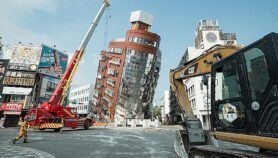By: Zoraida Portillo
Send to a friend
The details you provide on this page will not be used to send unsolicited email, and will not be sold to a 3rd party. See privacy policy.
[LIMA] A new technique for building low-cost houses in earthquake-prone areas has been successfully tested in Peru, and could be rolled out in any developing country with a seismic risk, according to researchers.
The system consists of prefabricated steel bars in the form of trusses, triangular support structures, which are welded to each other to form grids that, in turn, form the walls and ceiling of a house — essentially forming a lightweight steel structural skeleton.
These skeletons are then filled in with hollow brick or adobe, a building material made from clay, sand, water and natural fibres, which is used widely in house construction across the developing world, despite being highly vulnerable to earthquakes.
The system "is not complicated at all, and any qualified construction worker could do it", Francisco Ginocchio, a professor of civil engineering at the Pontifical Catholic University of Peru (PUCP), told SciDev.Net.
It was tested at PUCP’s Anti-seismic Structure Laboratory, in collaboration with the Technical University of Madrid (UPM), between 2008 and 2011. Tests were carried out on two-storey buildings, some of them built at full scale, constructed using cheap local materials such as adobe and hollow brick.
The results were published in the online journal Materiales de Construcción earlier this year.
The truss system, known as the ‘integral masonry system’, had previously been patented in Spain for use in brick masonry. However, Josep Adell, a professor of architecture at UPM and one of the study’s authors, and his colleagues, thought the system could also be applied to adobe.
Adobe is widely used in house construction in the developing world. For example, in Peru, a country with one of the highest seismic risks in the world, 40 per cent of the population — more than ten million people — live in houses made with adobe.
"If a big earthquake occurs, [the houses] would be a death trap," Marcial Blondet, a professor of civil engineering at PUPC, told SciDev.Net.
But according to laboratory tests, houses reinforced with trusses could endure even severe earthquakes.
"The prototypes did not collapse nor were they significantly damaged [in tests]," Blondet added.
"All material could be made or adapted locally," Ginocchio said. However, the costs have not yet been quantified and would mainly depend on the type of trusses used.
Belen Orta, an architect from Spain and co-author of the study, told SciDev.Net that the costs would also depend on the scale of roll-out and the number of houses built.
But in the long run, it is always cheaper to build reinforced houses than cheap houses that will collapse during earthquakes, Blondet said.













